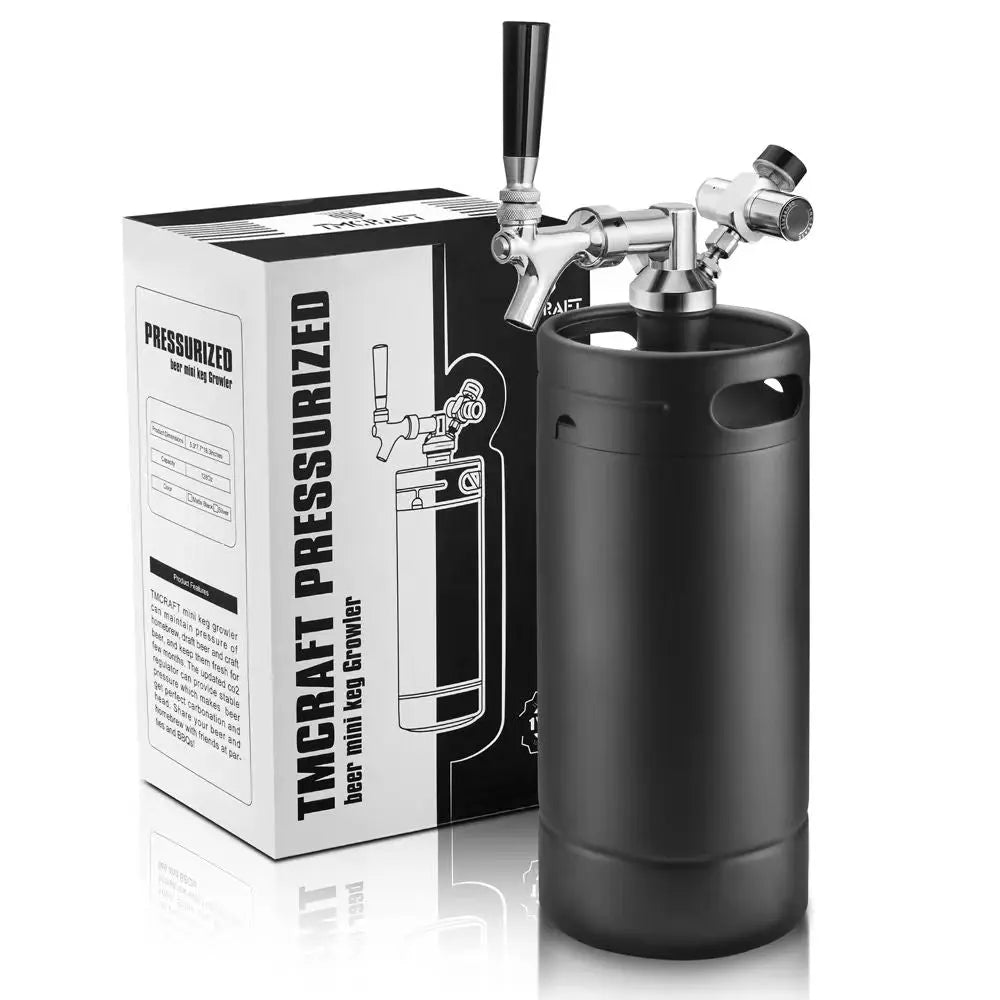How to Set Up a Ball Lock Keg System: A Complete Guide for Homebrewers and Bars
Focus Keywords: Ball Lock Keg, Keg Setup, Homebrewing Equipment, Beer Kegging, TMCRAFT Ball Lock Kegs
If you’re a homebrewer or bar owner looking for a reliable way to store, carbonate, and serve beer, a ball lock keg system is the perfect solution. Used by both craft brewers and commercial establishments, ball lock kegs offer efficient beer storage, precise carbonation control, and a professional dispensing experience.
In this guide, we’ll walk you through everything you need to know about setting up a ball lock keg system, from choosing the right equipment to step-by-step installation.
What is a Ball Lock Keg?
A ball lock keg is a type of stainless steel keg originally used for soda but has become the standard choice for homebrewers due to its ease of use, durability, and compatibility with modern kegging systems. Unlike pin lock kegs, ball lock kegs use ball-bearing connectors for gas and liquid lines, making them simple to connect and disconnect.
Why Choose a Ball Lock Keg?
✔ Easy to clean and maintain
✔ Compact size for home or commercial use
✔ Consistent carbonation control
✔ Compatible with various CO2 systems
✔ TMCRAFT Ball Lock Kegs offer high-quality stainless steel construction for durability
Essential Equipment for Your Ball Lock Keg System
To set up a ball lock keg system, you’ll need the following components:
1. Ball Lock Keg
- Available in various sizes (1.5-gallon, 2.5-gallon, 5-gallon)
- Stainless steel body for long-term use
- TMCRAFT Ball Lock Kegs are an excellent option for homebrewers and commercial setups
2. CO2 Tank and Regulator
- A CO2 tank (5 lbs or 10 lbs) is essential for force carbonating and dispensing beer
- A CO2 regulator helps control gas pressure
3. Gas and Liquid Disconnects
- Ball lock gas disconnect (gray) – connects CO2 to the keg
- Ball lock liquid disconnect (black) – connects the beer line to the tap
4. Keg Tubing and Tap System
- Gas line tubing (connects CO2 regulator to keg)
- Liquid line tubing (connects beer keg to tap)
- Faucet or beer tap for serving
5. Cleaning and Sanitizing Kit
- Keg cleaning solution and sanitizer
- Keg brush for scrubbing the interior
Step-by-Step Guide to Setting Up a Ball Lock Keg System
Step 1: Clean and Sanitize Your Keg
Before use, thoroughly clean and sanitize your ball lock keg to prevent contamination. Use a keg cleaner, rinse thoroughly, and let it air dry.
Step 2: Connect the CO2 Tank and Regulator
- Attach the CO2 regulator to your CO2 tank.
- Ensure the pressure valve is closed before opening the tank.
- Slowly turn the CO2 tank valve to release gas.
Step 3: Connect the Gas and Liquid Lines
- Attach the gray gas disconnect to the gas post of the keg.
- Attach the black liquid disconnect to the liquid post of the keg.
- Connect the beer line to the tap system.
Step 4: Carbonate Your Beer
- Set the CO2 regulator to 10-12 PSI for normal carbonation.
- For fast carbonation, set the pressure to 30 PSI for 24 hours, then reduce to serving pressure.
Step 5: Store and Dispense
- Keep your ball lock keg refrigerated for optimal beer storage.
- Use the tap system to serve fresh beer straight from the keg!
TMCRAFT Ball Lock Kegs: The Best Choice for Homebrewers and Bars
If you want a durable, high-quality kegging system, TMCRAFT Ball Lock Kegs are the perfect solution.
✔ 304 Stainless Steel Construction – Rust-resistant, food-grade material
✔ Pressure-Retaining Seals – Keeps beer fresh for weeks
✔ Easy-to-Clean Design – Simple disassembly for maintenance
✔ Compact and Stackable – Saves space for homebrewers and commercial bars
Conclusion
Setting up a ball lock keg system is the best way to improve your homebrewing or commercial beer setup. Whether you're a craft beer enthusiast or a bar owner, a ball lock keg ensures fresh, perfectly carbonated beer every time.


